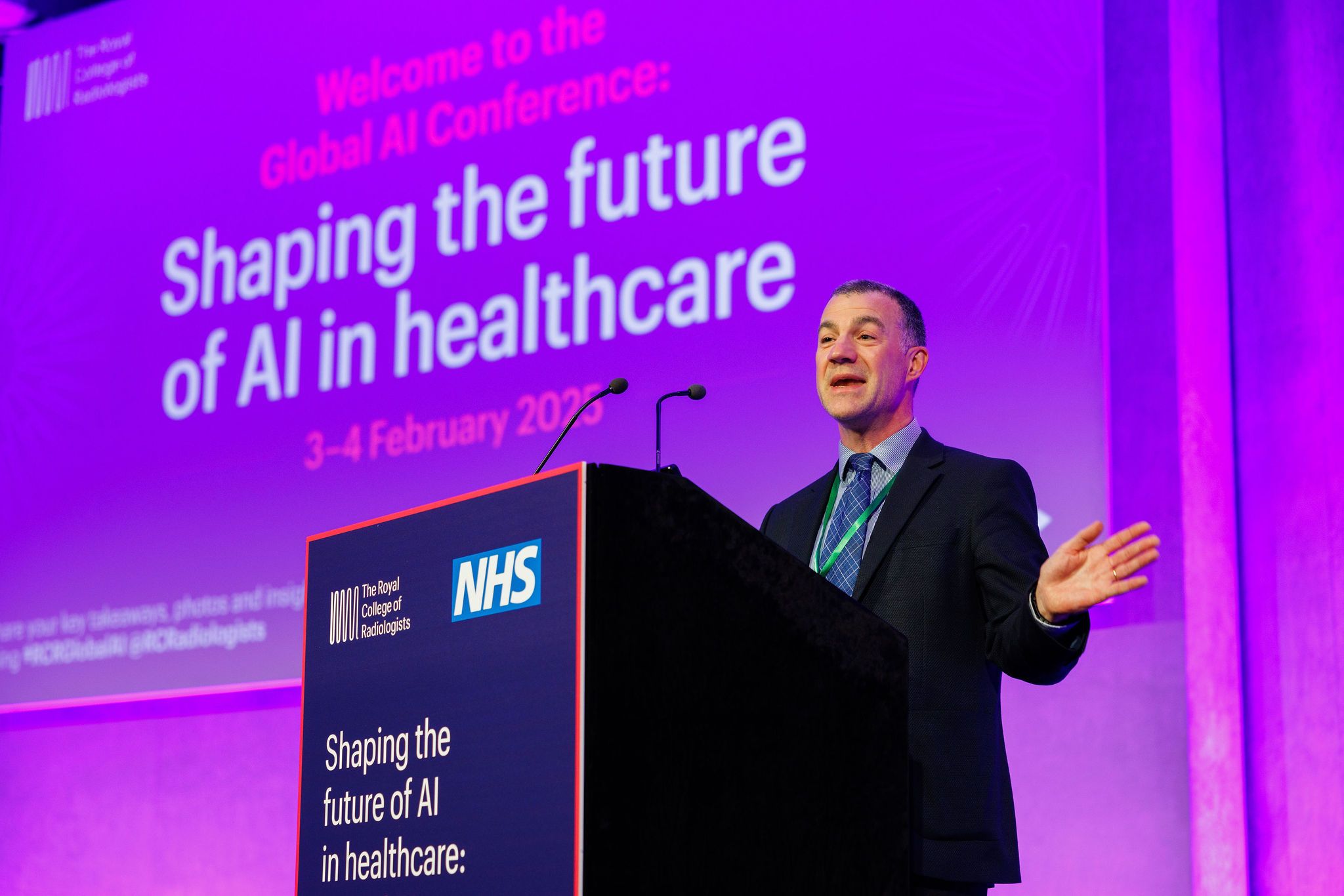RCR Global AI Conference: perspectives and experience
The Royal College of Radiologists’ Global AI Conference promised a unique insight into the latest developments in and the next steps for the technology. Synergy paid a visit to understand the many viewpoints on AI’s future
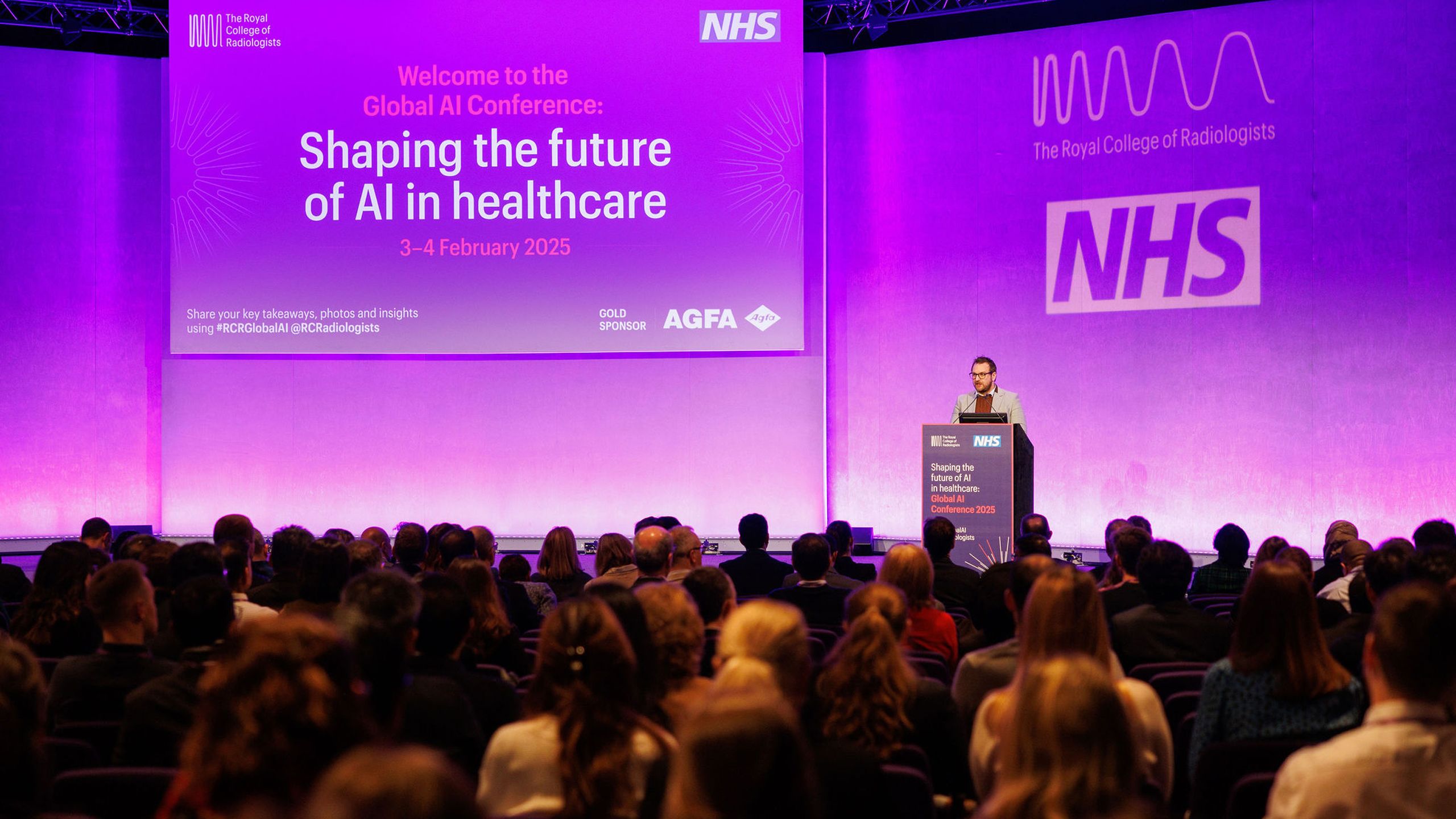
RCR Global AI Conference: perspectives and experience
The Royal College of Radiologists’ Global AI Conference promised a unique insight into the latest developments and the next steps for the technology. Synergy paid a visit to understand the many viewpoints on AI’s future

In February, the Royal College of Radiologists’ long-awaited Global AI Conference came around, with stakeholders and experts from across the healthcare spectrum (and the globe) paying London’s Queen Elizabeth II Centre a visit for the two-day experience.
With more than 1,000 attendees from 54 countries – representing a wide range of clinical specialties – joining the conference both in-person and online to attend 34 sessions delivered by 70-plus leading experts, the event, based around ‘Shaping the future of AI in healthcare: Learning from practice’, was a roaring success.
Content from the conference covered a range of topics, focusing largely on education and research in imaging artificial intelligence, AI in society, leadership and the patient perspective, governance and regulation of AI, and implementation in practice.
The event covered the whole spectrum of AI implementation, from platform developers to healthcare organisation representatives and officials from NHS England, to clinical radiologists and radiographers.
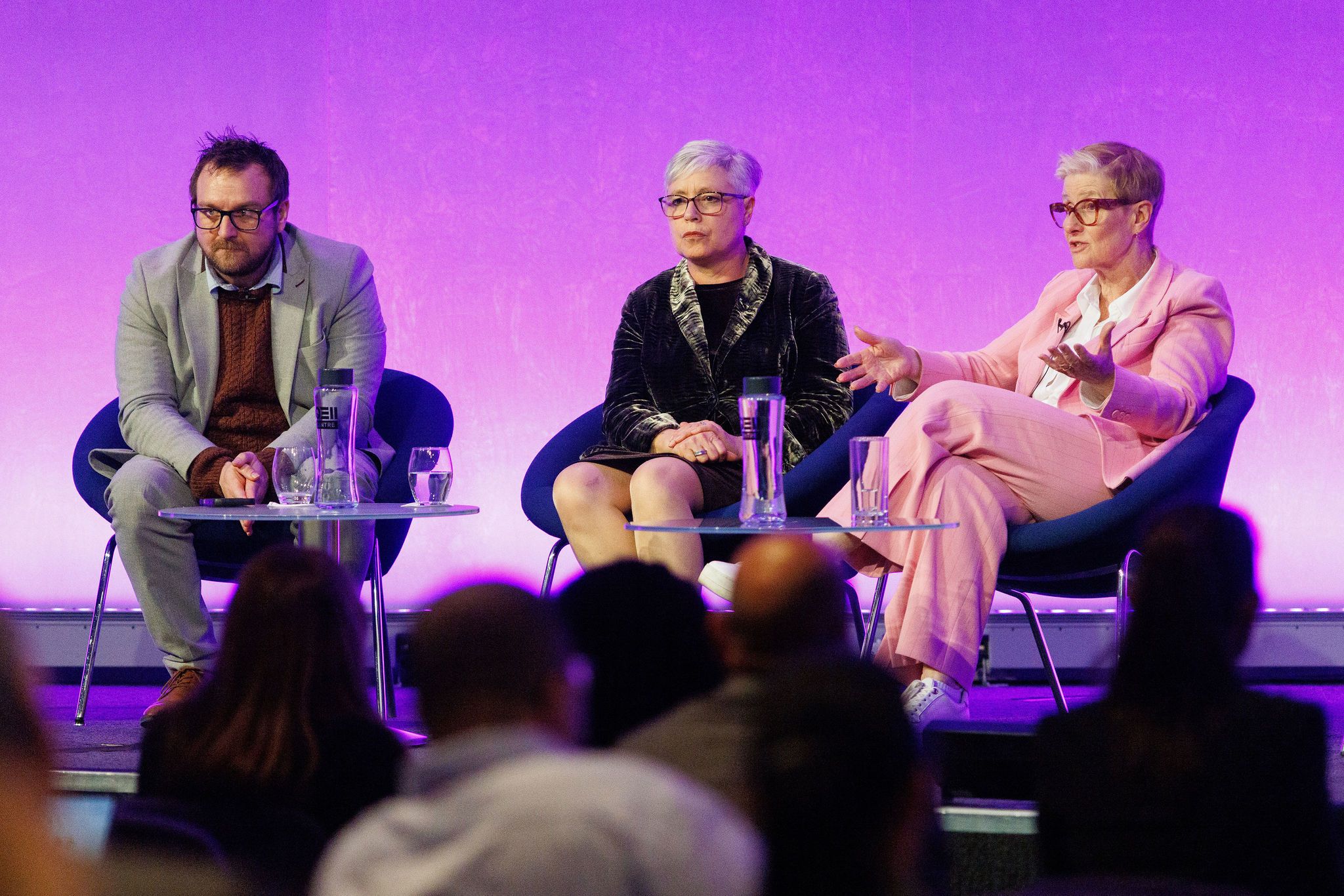
‘A visionary outlook’
Dominic Cushman, deputy director for AI at NHS England, gave the first keynote address to delegates, exploring the government’s strategic priorities for AI in healthcare and highlighting how it is transforming the NHS to become more efficient, patient-centred and future ready.
Dominic highlighted the importance of developing a “visionary outlook” for the future of the NHS – one where AI enhances timely access to care, improves survival rates through early diagnosis and ensures personalised treatment plans. He also emphasised the importance of collaboration across government, healthcare, academia and industry to ensure AI’s benefits are realised responsibly and equitably. “I call on the audience – healthcare professionals, policymakers and innovators – to actively participate in this transformation, acknowledging their critical role in shaping the future of AI in healthcare,” he concluded.
A common theme that emerged across sessions was that AI was not a “silver bullet” or a “magic wand” that would fix the multitude of problems facing the UK healthcare system – but that, if implemented properly at scale, it could help to ease the challenges pervading the NHS.
‘Bridge, not divide’
According to Leon Doorn, expert in medical devices and regulatory, quality and information security specialist at Qair.io, AI regulation is at a crossroads, with institutions across the world fighting to catch up to advancements in policy while maintaining trust, safety and effectiveness.
As these attempts accelerate, it will fall on clinicians and healthcare organisations to ensure they are AI literate, even as pressures increase, he said.
Another theme at the conference was the need to ‘bridge, not divide’ across hospitals and healthcare companies. One of the primary benefits of AI systems, explained Manjit Dosanjh, visiting professor at Oxford, is their ability to provide system-wide benefits, increased connectivity and joined-together thinking. If the UK can work at this more national level, despite the limitations of existing hardware and dated information technology infrastructure, he said, AI will become more robust and effective.
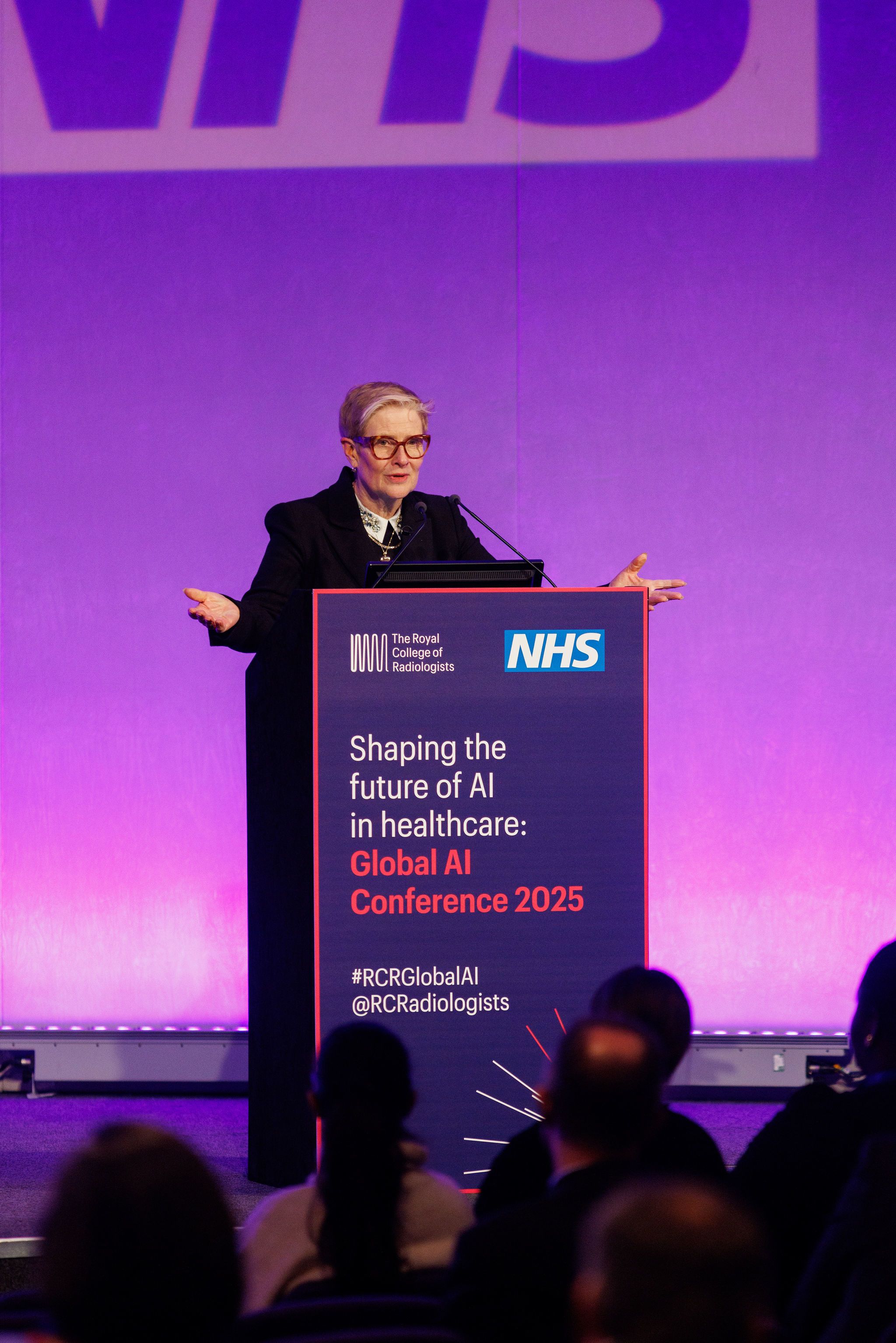

‘Bridge, not divide’
According to Leon Doorn, expert in medical devices and regulatory, quality and information security specialist at Qair.io, AI regulation is at a crossroads, with institutions across the world fighting to catch up to advancements in policy while maintaining trust, safety and effectiveness.
As these attempts accelerate, it will fall on clinicians and healthcare organisations to ensure they are AI literate, even as pressures increase, he said.
Another theme at the conference was the need to ‘bridge, not divide’ across hospitals and healthcare companies. One of the primary benefits of AI systems, explained Manjit Dosanjh, visiting professor at Oxford, is their ability to provide system-wide benefits, increased connectivity and joined-together thinking. If the UK can work at this more national level, despite the limitations of existing hardware and dated information technology infrastructure, he said, AI will become more robust and effective.
‘We’ve moved on from AI being theoretical’
Dr Tracy O'Regan, professional officer for clinical imaging at the SoR, added: “One of the main things that’s coming through is collaboration and building that. We’ve moved on from it being theoretical, and not something that’s achievable, to something that’s now pragmatic. How do we implement things? How do we ensure it’s implemented fairly? What’s the learning that’s needed? Where’s the funding? Where’s the research?
“It’s great to see the number of radiographers and sonographers who were here and presenting. I chaired the session on global healthcare inequalities, and it’s been great to see the power of the organising committee and AI to raise that and aim to do something about it.”
In the global healthcare inequalities session, Dr Ana Luisa Neves, clinical senior lecturer in digital health and director of the Global Digital Health Unit at Imperial College London, discussed some of the issues relating to developing AI in healthcare at scale. She demonstrated various case studies and pilots that had been established at trusts throughout the UK – how their attempts had gone and what challenges they had run into.
One of the primary issues facing healthcare organisations, particularly the NHS, is a general lack of digital maturity. This impacts the speed of establishment, the usefulness of data collected and success in understanding the benefits of implementing AI. Ana explained: “There isn’t enough evidence around the clinical costs and benefits of these technologies. Therefore, they need to follow an evidence generation plan.
“The market forces drive towards AI imaging – so why is access limited currently? The first factor is digital maturity and infrastructure, but another is the availability and type of data also dictates the type of innovation available. Bias in data can be quite problematic, and there is ultimately a chasm between what can happen in a research lab versus its translation on the clinical frontline.
“One of the things we see is the development of quite a few solutions that don’t take into account the entire clinical pathway. Using AI to identify and predict certain types of cancer through scans means verifying the results, which can actually lead to more biopsies, and more time in the operating theatre.”
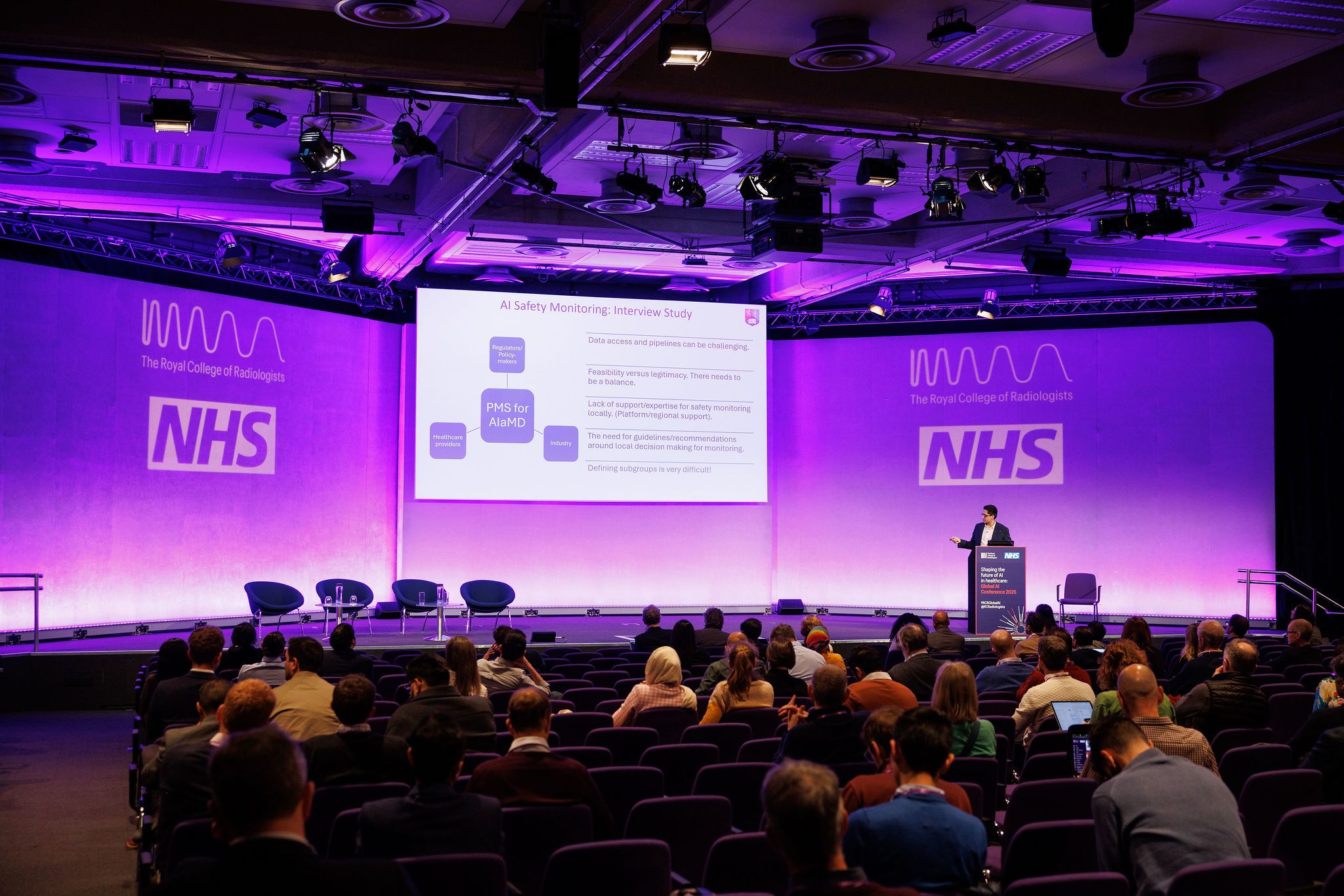
‘Working on change and improvement’
Even putting aside these issues, AI faces significant issues facing usage – for example, the problem of post-market surveillance.
How can hospitals prove AI effectiveness – in lung cancer screening – if AI predicts lung cancer potentially years into the future? Tracking that kind of patient data runs into issues of patient safety and privacy issues, but that doesn’t mean we shouldn’t try, argued speakers at the ‘Training in AI’ session.
Tom Welton, president of the SoR, said: “I’m really glad we’re getting away from the ‘robots and computers’ ethos, and towards how it integrates into healthcare. How can we shape what the NHS will be moving forward? Knowing that AI provides that real opportunity to achieve what we need to achieve – fewer people on waiting lists, reaching more people with better care – proves we’re on the cusp of something here.
“One of the sessions, run by Tracy O’Regan, focused on healthcare inequalities across the globe, and the stark concerns around AI and putting that into context. We need to be aware of how digital technologies can affect different backgrounds with very different levels of access internationally, and that really stuck with me today.
“It’s been a positive event; lots of people around, lots of radiologists, clinicians and chief operating officers who are looking towards AI diagnostics and therapeutics to work on change and improvement.”
More about the RCR Global AI Conference
The Royal College of Radiologists’ Global AI Conference brought together hospital leaders, clinicians, policymakers, allied healthcare professionals, IT professionals, educators, academics and AI companies to learn more about artificial intelligence across a broad range of clinical specialties.
Taking place at the Queen Elizabeth II Centre from 3-4 February, it saw more than 1,000 attendees from 54 countries present both in person and online, with 34 sessions delivered by more than 70 leading experts in healthcare and AI.
The conference addressed the barriers to widespread AI adoption, emphasising the need for sustained funding, infrastructure and digital skills development, and how AI can act as a transformative tool, capable of enhancing diagnosis, predicting illnesses and personalising care for patients, while easing the administrative burden on healthcare professionals.
Find out more about the Global AI Conference online here.
The SoR has a number of resources for anyone interested in exploring the potential impact of AI on the radiography profession. The Radiographer AI Special Interest Group (SIG) welcomes all radiographers as well as assistant practitioners. The group shares personal experiences, guidelines, educational opportunities and literature to support one another. For more information, read about the SIG here.
The SoR also has an Artificial Intelligence Advisory Group. To read its workplan for 2023-25, and find out more about joining the group, click here.
Read more




